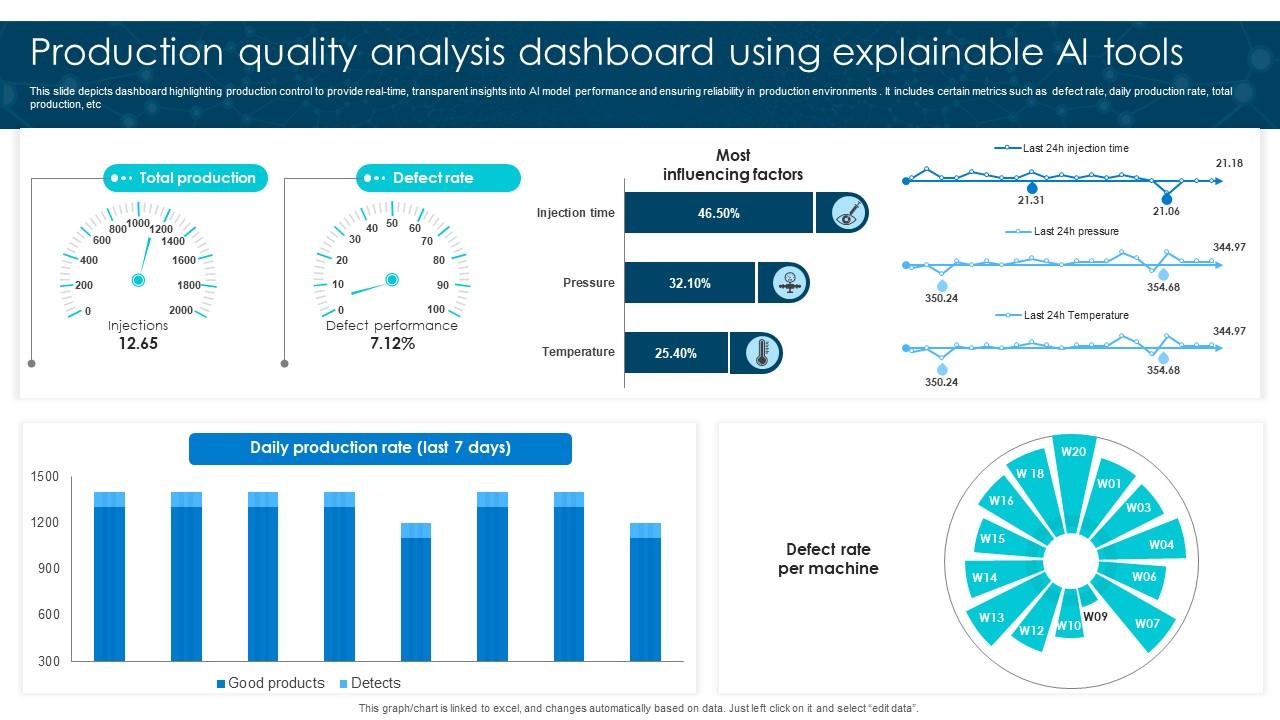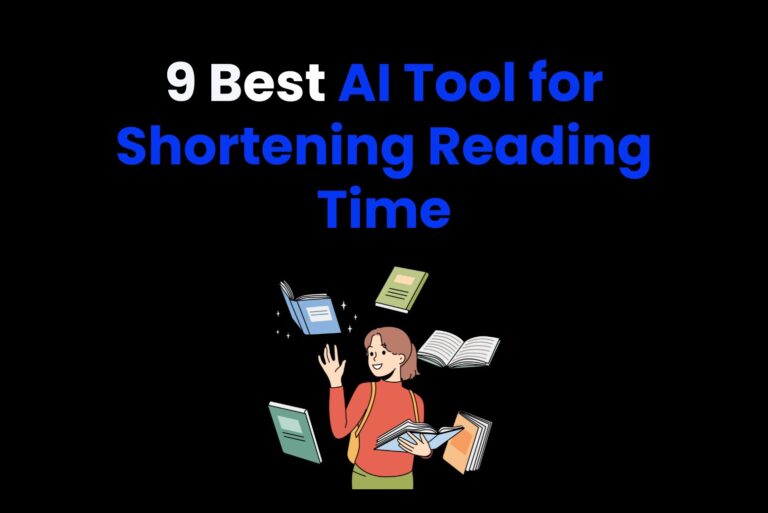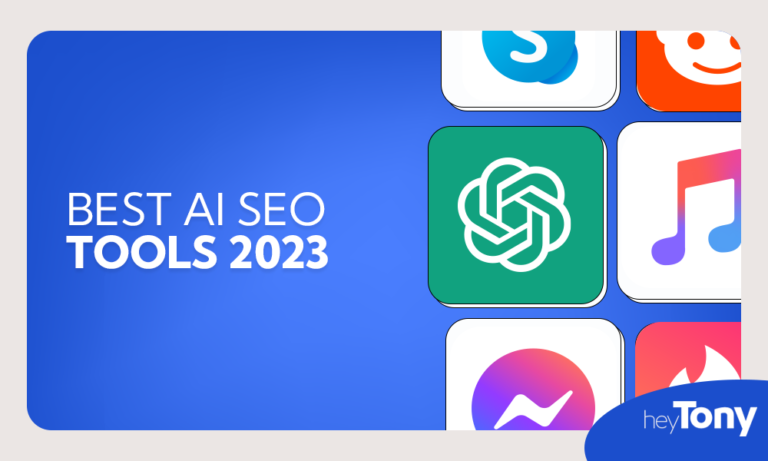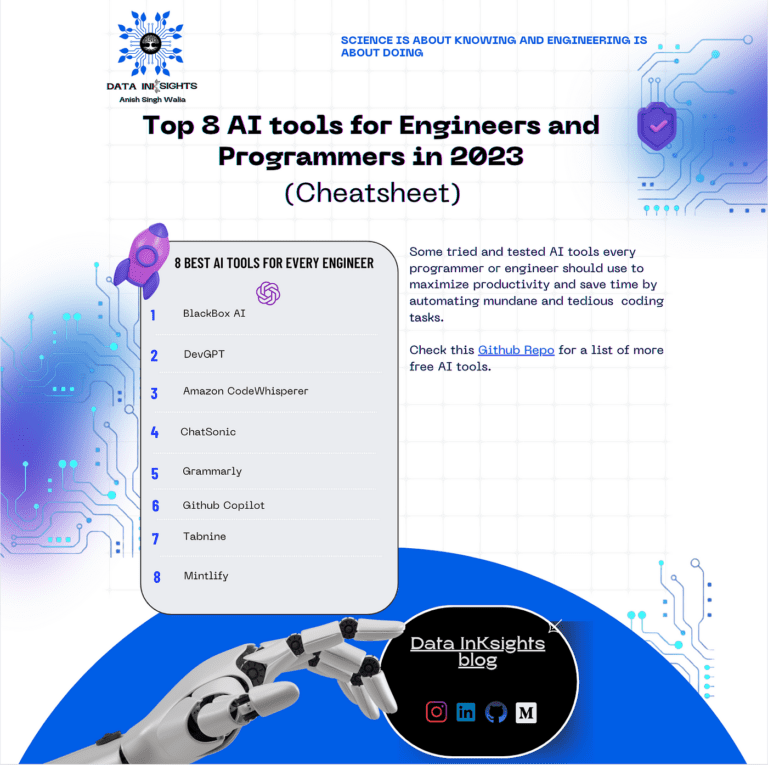Analytical Dashboard AI Tool: Unleash Data Power!
An Analytical Dashboard AI Tool simplifies data visualization and analysis. It helps businesses make informed decisions quickly and efficiently.
In today’s data-driven world, organizations need effective tools to interpret vast amounts of information. Analytical dashboard AI tools provide a clear, interactive way to visualize key metrics and trends. These tools enhance decision-making processes by presenting data in an easily digestible format.
Users can track performance indicators, identify patterns, and gain insights in real-time. With customizable features, businesses can tailor dashboards to fit their specific needs. As competition increases, leveraging such tools can give companies a significant edge, enabling them to act swiftly and strategically. Embracing these technologies is essential for achieving sustained growth and success.
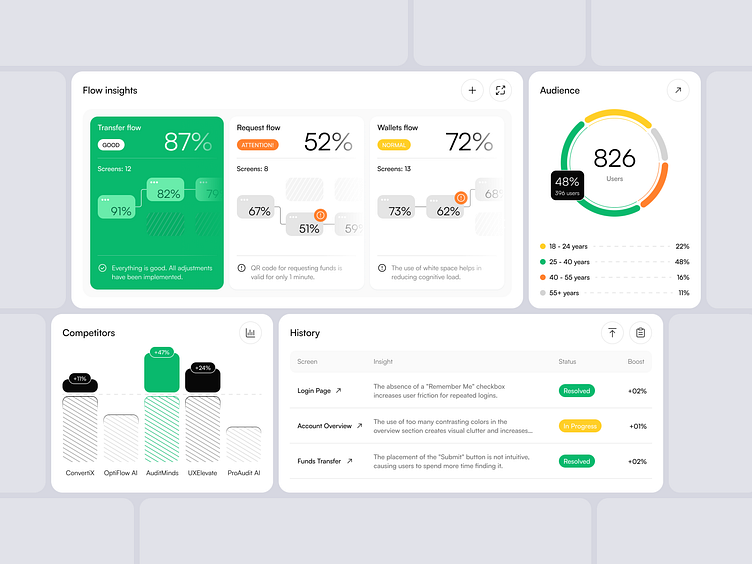
Credit: dribbble.com
Introduction To Analytical Dashboard AI Tools
Analytical Dashboard AI Tools have transformed how businesses visualize data. They provide clear insights quickly and easily. Companies use these tools to make smart, data-driven decisions. These dashboards are user-friendly and packed with features. They help users see trends, track performance, and identify opportunities.
The Rise Of Data-driven Decision Making
Data-driven decision-making is essential in today’s world. Companies rely on accurate data to succeed. Here are some reasons for this shift:
- Improved Accuracy: Data helps reduce guesswork.
- Faster Decisions: Quick access to information speeds up choices.
- Enhanced Performance: Identifying trends leads to better results.
Businesses now focus on real-time analytics. This leads to a competitive edge in the market. Companies that use data effectively outperform their rivals.
Essential Features Of Modern Dashboard AI Tools
Modern Analytical Dashboard AI Tools come with various essential features:
| Feature | Description |
|---|---|
| User-Friendly Interface | Easy navigation for all users. |
| Real-Time Analytics | Access data as it happens. |
| Customizable Widgets | Personalize dashboards to meet needs. |
| Data Integration | Connect with various data sources. |
| Collaboration Tools | Share insights with team members easily. |
These features help users get the most from their data. They offer a comprehensive view of business performance. The right dashboard can turn raw data into actionable insights.
Harnessing AI for Enhanced Data Analysis
Organizations today face massive amounts of data. An Analytical Dashboard AI Tool makes sense of this data. It helps in extracting valuable insights quickly. Businesses use these insights to make informed decisions. AI enhances data analysis by providing speed and accuracy.
Integrating Machine Learning For Predictive Insights
Machine learning plays a vital role in analytical dashboards. It uses algorithms to analyze past data. This helps in predicting future trends. Here are some benefits of machine learning integration:
- Improved Accuracy: Models learn and adapt over time.
- Real-Time Analysis: Instant insights from ongoing data.
- Customized Predictions: Tailors insights to specific business needs.
Businesses can use these predictive insights effectively. They can spot trends before they happen. This proactive approach drives growth and efficiency.
Natural Language Processing For Intuitive Interaction
Natural Language Processing (NLP) makes data analysis user-friendly. It allows users to interact with dashboards using simple language. Users can ask questions and receive instant answers. Key features of NLP include:
| Feature | Description |
|---|---|
| Conversational Queries | Users can type questions in everyday language. |
| Contextual Understanding | NLP understands the context of user queries. |
| Data Summarization | Automatically summarizes large datasets into key points. |
These features make dashboards accessible to everyone. No technical background is needed to gain insights. This democratizes data analysis across the organization.
Dashboard Design Principles
Creating effective dashboards requires understanding key design principles. Good design improves user experience and enhances data communication. Focus on user needs and clear visualizations for better insights.
User-centric Design For Effective Dashboards
User-centric design puts the user first. It ensures dashboards meet their needs. Here are some essential aspects:
- Understand Your Audience: Know who will use the dashboard.
- Define Goals: Clearly identify what users want to achieve.
- Simplicity: Keep the layout clean and straightforward.
- Accessibility: Ensure everyone can access and use the dashboard.
Gather feedback from users during the design process. Continuous improvement leads to better tools. Remember, a dashboard should tell a story, not confuse users.
Visualizations That Communicate Clearly
Visualizations play a crucial role in dashboards. They help users grasp data quickly. Here are some tips for effective visualizations:
| Type of Visualization | Best Use | Example |
|---|---|---|
| Bar Charts | Compare categories | Sales by Region |
| Line Charts | Show trends over time | Monthly Revenue |
| Pie Charts | Show proportions | Market Share |
Choose the right visualization for your data. Avoid clutter and distractions. Use colors wisely to enhance understanding. Keep legends clear and concise. Aim for a balance between aesthetics and functionality.

Credit: www.analyticsvidhya.com
Key Metrics And KPIs
Understanding Key Metrics and KPIs is essential. They help businesses track performance. Analytical Dashboard AI Tools make this easier. They gather data and visualize it. Users can quickly see how they are doing.
Identifying Metrics That Matter
Choosing the right metrics is crucial. Focus on what impacts your goals. Here are some important metrics to consider:
- Sales Growth: Measures how sales increase over time.
- Customer Retention: Tracks how many customers stay with you.
- Conversion Rate: Shows the percentage of visitors who become customers.
- Net Promoter Score (NPS): Gauges customer loyalty and satisfaction.
These metrics can drive better decisions. They provide insights into performance. Use them to align strategies with goals.
Custom Kpis Tailored By AI
AI can create Custom KPIs. This ensures relevance to your business. Here’s how it works:
- Data Collection: AI gathers data from various sources.
- Analysis: It analyzes trends and patterns.
- Customization: AI tailors KPIs to meet your specific needs.
Benefits of AI-generated KPIs include:
| Benefit | Description |
|---|---|
| Relevance | KPI matches your unique business goals. |
| Accuracy | AI reduces human error in data analysis. |
| Speed | Quickly generates insights for fast decision-making. |
Custom KPIs empower businesses. They focus on what truly matters. This leads to smarter strategies and better results.
Real-time Data For Real-time Decisions
Businesses thrive on timeliness. Making decisions with up-to-the-minute data is crucial.
An Analytical Dashboard AI Tool transforms raw data into insights instantly.
This helps companies stay ahead in a fast-paced world.
The Importance Of Up-to-the-minute Data
Up-to-the-minute data helps businesses respond quickly.
Here are some key benefits:
- Informed Decisions: Accurate data leads to better choices.
- Competitive Edge: Stay ahead of rivals with timely insights.
- Resource Optimization: Allocate resources more effectively.
- Customer Satisfaction: Meet customer needs quickly.
Companies using real-time data can adapt quickly.
They can spot trends and act before others do.
How AI Tools Keep Data Fresh
AI tools play a vital role in keeping data fresh.
They update information continuously.
Here’s how they do it:
- Automated Data Collection: Gather data from various sources automatically.
- Real-Time Analytics: Analyze data as soon as it arrives.
- Data Integration: Combine data from different platforms seamlessly.
- Alerts and Notifications: Notify users of significant changes instantly.
This ensures that businesses always have the latest information.
With fresh data, companies can make decisions confidently and swiftly.

Credit: ajelix.com
Case Studies: AI Dashboards In Action
AI dashboards are transforming industries. They provide insights that drive decisions. Let’s explore how two sectors benefit from AI analytics.
Improving Retail With AI Analytics
Retailers face many challenges. They need to understand customer behavior. AI dashboards help by offering real-time data.
- Sales Performance: Track which products sell best.
- Inventory Management: Optimize stock levels to reduce waste.
- Customer Insights: Analyze buying patterns and preferences.
For example, a major clothing retailer used an AI dashboard. They increased sales by 20% in six months. They achieved this by:
- Identifying popular styles.
- Adjusting inventory based on trends.
- Targeting marketing efforts to specific demographics.
The results were impressive. The retailer gained a clearer view of customer needs. This led to better stock management and increased profits.
Healthcare Analytics For Patient Care Optimization
Healthcare providers seek better patient outcomes. AI dashboards help track treatment effectiveness. They provide vital data for decision-making.
| Metric | Before AI | After AI |
|---|---|---|
| Patient Readmission Rates | 15% | 10% |
| Appointment No-Show Rate | 20% | 12% |
| Patient Satisfaction Score | 75% | 90% |
A hospital implemented an AI dashboard. They improved patient care significantly. They achieved this by:
- Predicting patient needs.
- Streamlining appointment scheduling.
- Enhancing communication between staff and patients.
The outcomes were remarkable. The hospital saw lower readmission rates. Patients felt more satisfied with their care.
Security And Privacy Considerations
Analytical Dashboard AI tools handle sensitive data daily. Protecting this data is crucial for users and organizations. Security and privacy must be top priorities for these tools. Let’s explore key aspects to ensure data protection.
Protecting Sensitive Information
Protecting sensitive information involves several strategies:
- Data Encryption: Encrypt data at rest and in transit.
- Access Controls: Limit access to authorized users only.
- Regular Audits: Conduct frequent security audits and assessments.
- User Training: Educate users on best security practices.
Implementing these measures helps secure data effectively. Users feel safer when they know their information is protected.
Compliance With Data Protection Regulations
Compliance with data protection regulations is vital. Many laws exist to protect personal data:
| Regulation | Region | Key Requirement |
|---|---|---|
| GDPR | European Union | Data must be processed lawfully and transparently. |
| CCPA | California, USA | Consumers have rights over their personal information. |
| HIPAA | USA | Protects sensitive health information. |
Following these regulations builds trust with users. It shows commitment to safeguarding their data.
Regularly review and update compliance strategies. Stay informed about new regulations and updates.
Choosing The Right Dashboard AI Tool
Finding the perfect Dashboard AI Tool is crucial for success. These tools help visualize data effectively. They turn raw numbers into clear insights. Select one that fits your business needs.
Evaluating Tool Features Against Business Needs
Different businesses have different needs. It’s important to match tool features with your requirements. Here are some key features to consider:
- User-Friendly Interface: Easy navigation for all users.
- Customization: Ability to tailor dashboards to specific needs.
- Real-Time Data: Access to updated information instantly.
- Integration: Works well with other software used in your business.
- Data Security: Keeps your information safe and secure.
List your business needs. Compare them with tool features. This method ensures the best match.
Roi Expectations From Dashboard Implementations
Return on Investment (ROI) is key for any tool. Consider these points when assessing ROI:
| Expectation | Measurement |
|---|---|
| Time Saved | Track hours spent on data analysis. |
| Decision Speed | Measure how quickly decisions are made. |
| Increased Revenue | Analyze sales growth after implementation. |
| Cost Reduction | Calculate savings from reduced errors. |
Set realistic ROI goals. Monitor progress regularly. Adjust strategies to maximize results.
Future Of Dashboard AI Tools
The future of Dashboard AI Tools is bright and exciting. These tools help users understand data better. They offer insights that can drive smart decisions. As technology evolves, so do these dashboards. Let’s explore what lies ahead.
Emerging Trends In AI and Data Analytics
New trends in AI and data analytics will shape dashboards. Here are some key trends:
- Real-time Data Processing: Dashboards will show live data updates.
- Natural Language Processing: Users can ask questions in simple terms.
- Predictive Analytics: Tools will forecast future trends.
- Customization: Users can personalize their dashboards easily.
- Integration with IoT: Dashboards will connect with smart devices.
Preparing For The Next Wave Of AI Advancements
Organizations must prepare for upcoming AI changes. Here are the steps to take:
- Invest in Training: Train staff on new tools.
- Focus on Data Quality: Ensure data is accurate and relevant.
- Adopt Agile Practices: Stay flexible to change quickly.
- Enhance Security: Protect sensitive data from breaches.
- Stay Informed: Keep up with AI news and updates.
Embracing these trends will prepare businesses for the future. Being proactive will lead to better outcomes.
Conclusion: Empowering Businesses With AI
AI tools are changing how businesses operate. Analytical dashboards make data simple and accessible. These tools help decision-makers understand trends quickly.
Summing Up The AI Dashboard Revolution
AI dashboards offer many benefits for businesses:
- Real-time insights: View data as it changes.
- Visual reports: Easy-to-read graphs and charts.
- Customizable features: Tailor dashboards to meet needs.
- Increased efficiency: Save time on data analysis.
- Improved decision-making: Make choices based on solid data.
These features empower teams to act faster. Organizations can respond to market changes easily. Embracing AI dashboards is a smart move for growth.
Next Steps For Organizations Embracing AI Tools
Organizations should take clear steps to implement AI tools:
- Identify key business goals.
- Choose the right analytical dashboard.
- Train staff on using AI tools.
- Monitor results and adjust strategies.
- Encourage feedback to improve the system.
These steps ensure a smooth transition to AI dashboards. Businesses can unlock their full potential with proper planning.
Frequently Asked Questions
What Is An Analytical Dashboard AI Tool?
An analytical dashboard AI tool is software designed to visualize and analyze data. It utilizes artificial intelligence to provide insights, trends, and forecasts. This tool helps businesses make data-driven decisions efficiently. Users can track key performance indicators in real-time, enhancing overall productivity.
How Does An Analytical Dashboard Improve Decision-making?
An analytical dashboard enhances decision-making by providing clear data visualizations. It allows users to quickly interpret complex data sets. With real-time analytics, businesses can respond promptly to market changes. This leads to informed strategies and improved operational efficiency, ultimately boosting overall performance.
What Are The Benefits Of Using AI in Dashboards?
Using AI in dashboards offers several advantages. It automates data analysis, saving time and resources. AI can identify patterns and trends that humans may overlook. Additionally, it provides predictive analytics, helping businesses anticipate future scenarios. This proactive approach leads to better planning and execution.
Can Anyone Use An Analytical Dashboard AI Tool?
Yes, analytical dashboard AI tools are designed for all users. They often feature user-friendly interfaces that require minimal technical expertise. Businesses of all sizes can benefit from these tools. Training resources and support are usually available to assist users in maximizing their potential.
Conclusion
An analytical dashboard AI tool can transform how businesses interpret data. It offers real-time insights that drive informed decision-making. By harnessing advanced analytics, organizations can enhance their efficiency and productivity. Embracing this technology ensures you stay competitive in a data-driven landscape.
Invest in an analytical dashboard to unlock your business’s full potential.
